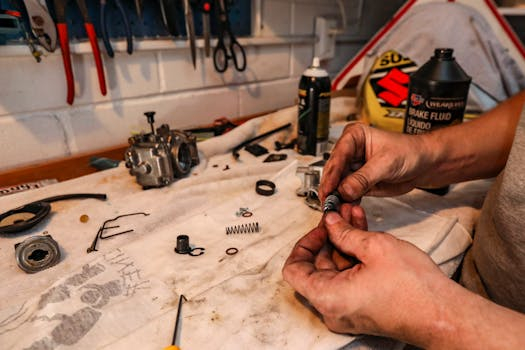DIY Car Repairs: What’s Safe and What’s Not?
Are you looking to save some money by doing your own car repairs? While DIY car repairs can be a cost-effective option, it’s important to know which repairs are safe to tackle on your own and which ones should be left to the professionals. In this article, we’ll discuss the dos and don’ts of DIY car repairs, providing you with the knowledge and information you need to make informed decisions about maintaining and repairing your vehicle.
The Benefits of DIY Car Repairs
One of the main reasons people choose to do their own car repairs is to save money. When you take your car to a mechanic, you not only have to pay for the parts and labor, but also for the overhead costs associated with running a business. By doing the repairs yourself, you can save significant amounts of money on labor costs.
Additionally, DIY repairs allow you to have complete control over the process. You can choose which parts to use and take the time to thoroughly research the best techniques for your specific repair. This can result in a better-quality repair and potentially save you from future repair expenses.
DIY Car Repairs: What’s Safe?
Not all car repairs are created equal. Some are relatively simple and safe to tackle on your own, while others are more complex and require specific tools and expertise. Here are some of the most common DIY car repairs that are generally considered safe for the average car owner.
Replacing Spark Plugs
Replacing spark plugs is a fairly straightforward repair that can be done by most car owners. Before beginning, consult your owner’s manual for the correct spark plug type and gap measurement for your specific vehicle. With the proper tools and precautions, this repair can be completed in less than an hour.
Changing the Air Filter
The air filter helps to keep dirt and debris out of your engine, improving performance and fuel efficiency. Changing the air filter is another relatively simple DIY repair that can save you money. Be sure to purchase the correct filter for your vehicle and follow the instructions in your owner’s manual.
Replacing Windshield Wipers
Having functioning windshield wipers is crucial for safe driving, especially in inclement weather. Fortunately, replacing worn out wiper blades is a quick and inexpensive DIY repair that can greatly improve visibility on the road.
DIY Car Repairs: What’s Not Safe?
While there are many repairs that can be safely done at home, there are a few that require specialized tools and knowledge. Attempting these repairs without proper training and experience can be dangerous and may result in further damages or injuries.
Replacing the Serpentine Belt
The serpentine belt is a key component of your car’s engine, helping to power essential functions such as the alternator and air conditioning. Replacing the serpentine belt requires specialized tools and knowledge of your car’s specific system, so it’s best left to the professionals.
Fixing Transmission Issues
The transmission is one of the most complex and expensive parts of a car, and any repairs to this component should be done by a trained professional. A mistake made during a DIY transmission repair can be costly and potentially dangerous.
Handling Electrical Work
Messing with the electrical system in your car is not only challenging, but also extremely dangerous. Without proper knowledge and tools, you risk causing serious damage to your car or even electrocution. Leave electrical repairs to the experts.
In Conclusion
DIY car repairs can save you money and give you a sense of accomplishment, but it’s important to know your limits. Always consult your owner’s manual and research the proper techniques and safety precautions before attempting any repairs. When in doubt, it’s best to leave more complex repairs to the professionals to ensure the safety and integrity of your vehicle.










